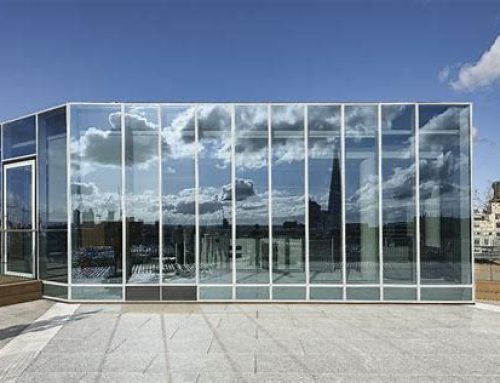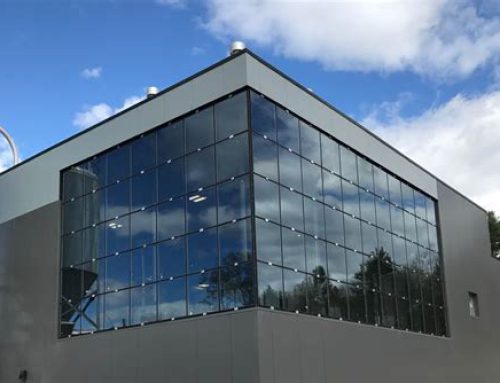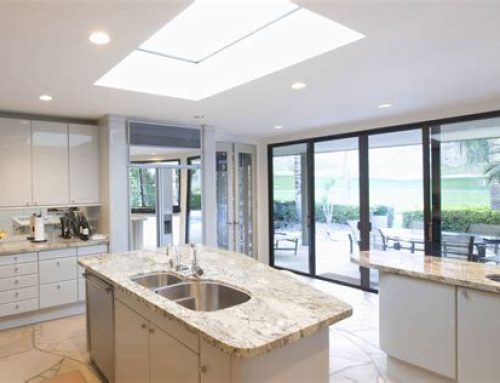Glass wall installation cost

Introduction:
Glass walls have become a popular choice in modern architecture, offering sleek aesthetics and functionality. Whether used in residential spaces, commercial buildings, or offices, glass walls can transform the ambiance of a room while allowing natural light to flow freely. However, when considering glass wall installation, one crucial aspect to understand is the cost involved. In this article, we delve into the various factors and considerations that influence the cost of glass wall installation.
- Types of Glass: The type of glass used significantly impacts the overall cost of installation. Some common types include:
- Tempered glass: Known for its durability and safety features, tempered glass is more expensive than regular glass due to its manufacturing process.
- Laminated glass: This type of glass consists of multiple layers bonded together, offering enhanced strength and security. Laminated glass tends to be pricier due to its construction.
- Low-E glass: Low-emissivity glass is designed to minimize heat transfer, making it energy-efficient. While it may have a higher upfront cost, it can lead to long-term savings on energy bills.
- Size and Thickness: The size and thickness of the glass panels play a significant role in determining the cost. Larger panels and thicker glass will generally cost more due to increased material requirements and installation complexity.
- Design Complexity: Intricate designs, such as curved or custom-shaped glass walls, often require specialized fabrication and installation techniques, leading to higher costs. Additionally, features like etching or frosting can add to the overall expense.
- Structural Considerations: Glass walls may require additional structural support, especially in high-rise buildings or areas prone to seismic activity. Reinforcing the surrounding framework or installing load-bearing elements can contribute to the total installation cost.
- Accessibility and Site Conditions: Factors such as accessibility to the installation site, existing infrastructure, and site preparation requirements can impact the overall cost. Difficult-to-reach locations may necessitate specialized equipment or increased labor, adding to the expenses.
- Installation Method: The method of installation, whether it’s frameless, semi-frameless, or framed, will influence the cost. Frameless systems, which offer a seamless look, often come with a higher price tag due to the precision required in installation.
- Additional Features: Optional features like soundproofing, UV protection, or integrated smart glass technology can further elevate the cost of installation but may provide added functionality and comfort.
- Labor Costs: Skilled labor is essential for proper glass wall installation. Labor costs can vary depending on factors such as location, labor market conditions, and the experience of the installation team.
- Maintenance and Long-Term Costs: While the upfront cost of glass wall installation is significant, it’s essential to consider long-term maintenance expenses. Regular cleaning and maintenance are necessary to preserve the appearance and functionality of glass walls, which may incur additional costs over time. Additionally, factors such as warranty coverage and the durability of the chosen glass type can impact long-term expenses.
- Return on Investment (ROI): Despite the initial investment, glass walls can offer various benefits that contribute to the overall value of a property. These benefits may include improved aesthetics, enhanced natural light, increased energy efficiency, and better space utilization. Evaluating the potential ROI of glass wall installation can help justify the upfront cost by considering the long-term value and advantages they provide.
- Cost-Saving Strategies: Property owners seeking to minimize installation costs can explore several strategies to achieve their desired outcome without overspending. These may include:
- Comparing quotes from multiple suppliers and contractors to find the most competitive pricing.
- Opting for standard glass types and designs to reduce material and fabrication costs.
- Planning the installation during off-peak seasons or negotiating discounts for bulk orders.
- Considering alternative materials or design options that offer a similar aesthetic at a lower cost.
- Regulatory Compliance and Permits: Depending on local building codes and regulations, obtaining permits for glass wall installation may be necessary. Permit fees and compliance requirements can add to the overall project cost and should be factored into the budgeting process. Working with experienced contractors who are familiar with local regulations can help streamline the permitting process and ensure compliance.
- Environmental Considerations: It’s also important to consider the environmental impact of glass wall installation. Opting for energy-efficient glass types, such as Low-E glass, can contribute to reducing heating and cooling costs, thus lowering the building’s overall carbon footprint. Additionally, choosing suppliers and manufacturers with sustainable practices can align with green building initiatives and promote environmental responsibility.
- Insurance and Liability: Glass wall installation involves inherent risks, including breakage during transportation or installation, which can result in additional costs. Property owners should ensure that contractors have adequate insurance coverage to mitigate potential liabilities. Understanding the terms of insurance policies and warranties can provide peace of mind and protect against unforeseen expenses.
- Project Timeline: Time is money, and delays in glass wall installation can lead to increased costs associated with extended labor or project management. Developing a realistic project timeline and coordinating effectively with contractors and suppliers can help minimize disruptions and keep the project on schedule. However, rushing the installation process to meet tight deadlines can compromise quality and result in additional expenses down the line.
- Post-Installation Support: Beyond the installation phase, property owners should consider ongoing support and maintenance services offered by contractors or suppliers. Having access to reliable support for repairs, replacements, or upgrades can prolong the lifespan of glass walls and ensure their continued functionality. Understanding the terms of post-installation support agreements and associated costs can help in budgeting for long-term maintenance.
- Cost-Benefit Analysis: Before committing to glass wall installation, conducting a thorough cost-benefit analysis can help assess the financial viability of the project. This analysis should consider not only the upfront installation costs but also the long-term savings, aesthetic improvements, and potential increase in property value. By weighing the costs against the expected benefits, property owners can make informed decisions that align with their budgetary constraints and project goals.
In summary, while the cost of glass wall installation may seem daunting, considering various factors such as environmental impact, insurance coverage, project timeline, and post-installation support can provide a comprehensive understanding of the overall expenses involved. By carefully evaluating these considerations and planning effectively, property owners can achieve a successful glass wall installation that enhances the aesthetics, functionality, and value of their property while staying within budget.
In conclusion, the cost of glass wall installation encompasses numerous factors, from the type of glass and design complexity to labor expenses and long-term maintenance. By thoroughly evaluating these considerations and engaging with experienced professionals, property owners can navigate the complexities of glass wall installation while effectively managing costs.
Moreover, recognizing the broader implications of glass wall installation, such as environmental impact and regulatory compliance, underscores the importance of a holistic approach to the project. By prioritizing sustainability, safety, and long-term value, property owners can make informed decisions that align with their budgetary constraints and overarching objectives.
Ultimately, while the upfront investment in glass wall installation may be significant, the potential benefits in terms of aesthetics, energy efficiency, and property value can justify the expenditure. By taking a strategic and thoughtful approach to planning, budgeting, and execution, property owners can achieve a successful glass wall installation that enhances the appeal and functionality of their space for years to come.





Leave A Comment